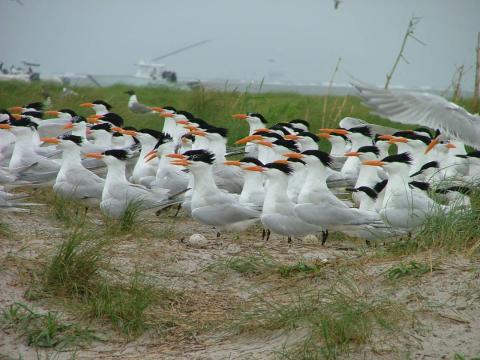The Regionwide Trustee Implementation Group has recently completed a comprehensive summary of high-resolution (1cm2) aerial photographs taken from 2010 - 2021 of colonial waterbirds in the northern Gulf of Mexico from the Lower Laguna Madre in Texas to the Florida Keys. A new Avian Data Monitoring Portal makes the information available to the public.
Colonial waterbirds are species that breed in colonies on islands along the coast. Familiar waterbird species found in the northern Gulf of Mexico include brown pelicans, royal terns, black skimmers, roseate spoonbills, and many others. This guild of birds and their limited remaining nesting habitats were harmed by the 2010 Deepwater Horizon oil spill.
The Avian Data Monitoring Portal is easily searchable and makes the 49,000 aerial photographs of coastal areas and islands, which are marked with dots that indicate the number of waterbird nests, available in a graphic display. Users can also view the search results via a dashboard that displays avian performance (species diversity and nesting abundance) across multiple spatial scales (individual, state, and region) and across time. The Portal was made possible by the collaborative efforts of the Deepwater Horizon Trustee agencies, the Water Institute, and Colibri Ecological Consulting, LLC.
The Trustees aimed to create a functional and easy to use information platform with the potential for addressing ongoing and future needs for waterbird restoration and monitoring. To do this, the Trustees engaged with a diverse array of organizations and individuals who might use the Portal, including secondary and university education, research, natural resource restoration, conservation and management agencies, and related organizations.
The Trustees envision that this regionwide investment in the colonial waterbird database, when combined with state-specific waterbird information, will be valuable for evaluating the effectiveness of existing restoration projects; informing adaptive management decisions (thereby increasing the project’s effectiveness); updating future restoration project design and construction guidance; and supporting future Trustee restoration, conservation, and management efforts.
Read the 2023 report: Colonial Waterbird Monitoring with Aerial Photographic Surveys in the Northern Gulf of Mexico, 2010–2021 (PDF, 38 pages).


